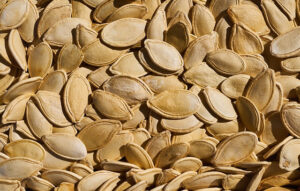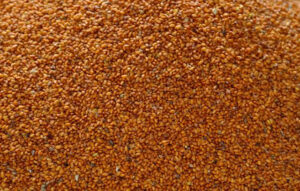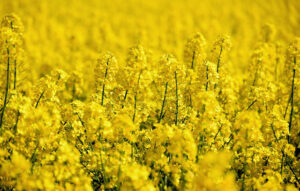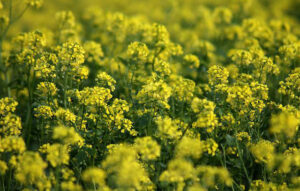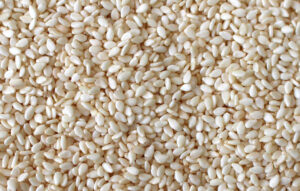GrainProTrade – Mustard wholesale at producer prices
Our company GrainProTrade supplies white, yellow and black mustard directly from farmers in Ukraine on favorable terms. With a purity of 99% and a moisture content of no more than 12%, our mustard seeds are excellent for making delicious mustard.
You can safely buy mustard from us without worrying about the quality, because all of our products are consciously selected by our QM employees in Ukraine and thus meet the highest standards, which guarantees the expected quality of the goods. Besides the high standard, the products are sold at an affordable wholesale price. The conditions for the sale of mustard can be specified at any time in writing or by telephone with the manager. Our team provides our customers with the in Big Bag packed mustard ordered by truck within 5 working days.
The main advantages of the ZusaWorking with our company:
- the high level of professionalism of our entire team, which ensures a hassle-free delivery of quality mustards in the shortest possible time;
- an appropriate price level, since we work directly with mustard producers in the Ukraine, e.gusamen work;
- convenient delivery straight to you.
Contact our managers on the website or by phone. We offer high quality mustard at an optimal price!
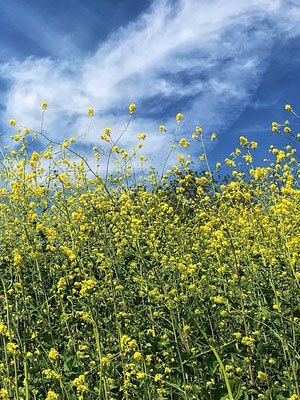
mustard field

mustard blossom
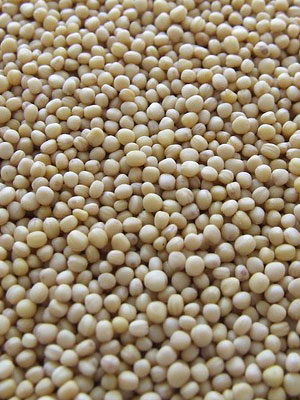
mustard seeds

Bratwurst with mustard
All about mustard
The average chemical ZusaComposition of white mustard seeds is 32% protein, 35% fat, 14% BEV, 4,2% ash and 9% dietary fiber. The average energy content of 1 c is 26,4 * 103 MJ. The average chemical ZusaComposition of mustard seed is bluish: 24% protein, 41% fat, 24% BEV, 5,3% ash and 8% dietary fiber. The average energy content of 1 c is 28,6 * 103 MJ. Indicators vary depending on soil and climate and weather conditions, individual elements of cultivation technology.
Carotenoids (β-carotene, lutein, violaxanthine, neoxanthine), flavonoids, glycoside – sinigrin, gluconapine, gluconasturcin, glucobrasicanapine have been found in yellow mustard leaves. The seeds contain glycosides - sinigrin, gluconapine; Thioester - diallyl sulfide, diallyl trisulfide; glucosinolates and isothiocyanates and mustard oil (3%). Sareptic mustard contains other nitrogenous compounds, higher fatty acids: erucic, linoleic, linoleic, oleic, eicose, palmitoleic fatty acids.
Yellow mustard is an annual plant of the cruciferous family. The stem is erect, branched, usually 60-90 centimeters high. Under favorable conditions, the plants reach a height of 120 to 150 centimeters. The stem is smooth, sometimes with rare hairs and a bluish sheen.
A distinctive morphological feature of yellow mustard from other crops is the presence of two types of leaves. In the first days of life it forms a root rosette of leaves in the manner of ordinary biennials. These leaves are large, stalked, slightly hairy. In optimal weather conditions, the leaves reach large sizes - up to 50 centimeters. They are lyrical - feathered, with a large oval upper blade. In the zone of chestnut soils, a basal rosette of leaves will form within 22 to 25 days after germination. The diameter of the rosette of leaves by this time reaches 20-25 centimeters, shading up to 85% of the soil surface.
The mustard then begins to form a stalk with smaller, short leaves. There are smaller sessile leaves on the upper part of the stem. They are elongated-linear, circular or slightly jagged. The leaves are covered with a waxy coating without hairs. Coloration varies from green to dark green and anthocyanin. In the case of solid plants, 4 to 7 branches are formed on a trunk, in the case of broad-eating branches 11 to 16 branches, on which 40 to 70 pods form.
The inflorescence is lax, from thyroid-shaped to racemose. The flower goes from bottom to top. The flowers are four-lobed, light yellow in color. After flowering, linear pods are formed, pressed against the branches and perched on short (0,5 to 1,5 centimetres) stalks. The dimensions of the sleeve are 2,5 to 5,5 centimeters long and 0,2 to 0,5 centimeters wide. The sleeve has a thin, awl-shaped outlet. The seeds are attached to the inner septum of the pod.
Seeds mustard yellow from yellow to dark brown, spherical, small. The mass of 1000 seeds ranges from 1,6 to 3,4 grams. The surface of the seeds is smooth. The seeds taste bitter, when grated they emit an ethereal smell characteristic of table mustard. Seeds contain up to 49% fat. The Zusacomposition of the seeds contains essential oils, the proportion of which is up to 1,2%. The length of the growing season depends on the meteorological conditions of the year. Mustard ripens in 70 days in dry years and in 90 days in wet years.
place in the crop rotation
A good place for mustard is a field of wheat and rye, which are steamed, as well as root crops. Winter wheat should follow the mustard. You can not sow mustard after flax and cruciferous vegetables (they have common pests and diseases). According to the available data, mustard gives high yields in the unadulterated areas of perennial deposits or perennial grasses.
Black steam remains the ideal precursor for mustard in the south and south-east. The pledge of harvest here lies in the weed clearing of the field and the availability of guaranteed soil moisture stores on the steam fields. Winter and spring wheat on black pairs are also good precursors to mustard. Good results are obtained when sowing mustard after legumes, and especially with a layer of perennial grasses.
Re-sowing mustard over mustard or other cruciferous vegetables is totally unacceptable. The time gap for the return of these cultures should be at least 3-4 years. Undesirable precursors for mustard are millet, sorghum, beets and annual herbs.
The positive role of the best predecessors will affect only if the appropriate cultivation technologies of the previous crops of mustard are observed. Therefore, it is necessary to pay close attention to the nature of the clogging of the site in the previous summer. Neglected fumes, wintry, clogged spring crops or legumes cannot provide a future high crop of mustard.
It is unacceptable to put mustard on fields clogged with perennial weeds (thistles, wheatgrass, etc.). It is difficult to count on success in sowing mustard in overseas fields. In the first stages, mustard grows slowly, and fast-growing perennial and early spring weeds can completely drown out the plants. At the same time, with optimal sowing times, mustard is a strong competitor for a large group of late spring weeds: pincers, bristles, barnyard grass. Friendly mustard shoots can completely suppress these weeds, so mustard can be grown in such fields with high efficiency.
Timing and methods of sowing
The mustard seeds are warm and begin to germinate at + 1,0 C. However, they require significantly more moisture to swell and germinate than grains. Therefore, the mustard should be sown as early as possible, when the seeders first come to the field.
Studies have shown that at the earliest sowing, 16,8 hundredweight/hectare of oilseeds were obtained. With a delay in sowing by 10 days, the yield of mustard was 14,4 hundredweight/hectare. When sowing 20 days later, the yield of mustard was no more than 0,9 hundredweight/hectare. Experience shows that the highest harvest of mustard is only guaranteed with early and high-priority sowing times.
The main reason for the decrease in yield when delaying sowing is the thinning of shoots due to the drying out of the seed layer of the soil. In later crops, the effect is more influenced by weeds, which often drown out the mustard. The productivity of late seeding crops is negatively affected by unfavorable weather conditions in the form of a summer drought. Because of the clear advantage of the early sowing time, some farms practice sowing by aerial and other means on spread methods. For this purpose, the soil is prepared in the previous year in the manner of steam or half-cooked. Sowing is carried out early in the spring, after snow falls over the frozen ground at a temperature of -2 degrees. The seeds are mixed with superphosphate or ammonium on the day of sowing in a ratio of 1:7 or 1:10. To seal the seeds into the ground 7-10 days after sowing, a shake with subsequent roller rolling is performed.
Plants take full advantage of the spring stocks of soil moisture and develop a strong root system and leaf apparatus. In the future, mustard plants grown with overflowed seed tolerate adverse natural conditions much better and walk away from massive cruciferous damage. When choosing the method of sowing, the reserves of autumn-winter moisture in the soil and the clogging of the field are taken into account.
In well-prepared and weed-free fields, successful results can be achieved with an ordinary single sowing with row spacing of 30 centimetres. Sowing by a reduced seed rate coulter is used to increase plant nutritional area and achieve optimal seed rate, which is particularly important in extremely dry years. In areas with insufficient moistening, especially after snowy winters, preference should be given to the wide sowing method with 70 cm row spacing with the obligatory subsequent cultivation of row spacing.
With any type of sowing, both small and deep sealing of mustard seeds are unacceptable. The impact depth ranges from 3 to 4 centimeters. The key requirement here is to seal the seeds in moist soil. Deeper sealing is permissible on light, mechanical soils as the top layers of tillable soil dry out. The crushing depth of the seeds is regulated by the pressure springs of the coulter bars until they are completely released.
When sowing with a row spacing of 30 centimeters, a sowing rate of 1,5-2,0 million germinating seeds per 1 hectare is used. On irrigated land, as well as in the zone of black soil in the fertile spring, it is advisable to increase the sowing rate to 2,5 million germinating seeds. In dry areas with a wide sowing method with a row spacing of 45 centimeters, the sowing rate can be reduced to 1 million germinating seeds. The target sowing rate can be maintained if you mix mustard seed with granular mineral fertilizers in advance at a rate of 20 kg/hectare. In this case, the seed boxes are filled with a mixture of no more than 1/3 of the part.
harvest
Mustard is a long flowering plant and its ripening is often delayed. Therefore, a full harvest can be obtained only under the condition of the correct choice of the Kosovo period. With early harvest, the seeds are fed, the proportion of oil contamination increases, the yield of oil and its quality decrease. At the same time, a delay in harvesting inevitably leads to crop losses due to mustard.
Mustard can be separated or removed directly. At the beginning of the cleaning, the two-phase method is preferable. On sloping beams, when about half of the pods acquires a lemon-yellow color, and the seeds in the lower pods of the central branches have already acquired high-grade yellow coloring of the variety. The moisture of the seeds at this time is 30-40%. The cutting height must not be less than 15-20 centimeters When mowing low mustard brackets on the reel hang rubber belts 70-80 millimeters wide to mitigate the impact on the plants and reduce weeping of the seeds from the pods. The rollers are threshed when they dry out at a seed moisture content of 8-12%.
When mowing onto the landfill, there is always a risk of frequent winds spreading the drying out rollers. To avoid such losses, some farms practice exiting “impacts” up to 30 centimeters wide per pass of the combine. The remaining plants prevent the transfer of mustard rolls and retain the bulk of the crop.
Direct mowing is used in the economy with uniform maturation of plants, in the absence of weeds in the plants, in the presence of a good grain cleaning and drying base. The deadline for direct harvesting occurs at a seed moisture level of 18% and below.
The mustard seeds are very small and have high fluidity. Large losses are possible when threshing. Therefore, the combines must be carefully prepared for harvesting. Proper technological adjustment of combines plays a crucial role in the most complete harvest of seeds. When mowing directly, to reduce the crushing of seeds from the pods, its ledge is fitted with a rubberized belt 70-80mm wide. The ratio of the peripheral speed of the blades to the translation speed of the combine harvester is 1:1,0/1,1. The working speed of the combine harvester should be within 5-6 km/h.
When choosing rollers, attention is also paid to the speed of the combine harvester and the speed of the pick-up belt. Copy shoes headers set in a position corresponding cutting height 100mm to reduce impact on swath and warn pods cracking in the rollers.
To reduce the scattering of seeds with the snail's fingers over the central part, a visor made of metal or tarpaulin is arranged, which is attached to the brackets on the windshield of the heder. The dimensions of the visor, 2,0x0,8 m, should allow complete overlapping of the central part of the snail and be above it at a height of 35-40 centimeters.
16 centimeters wide and 80 centimeters long. These blades are used for complete removal from the bottom of the crop and feeding it safely to the inclined chamber conveyor. The blades are mounted with a protrusion above the auger spiral at 35-40 millimeters.
All settings are refined during the trial run of the combine and adjusted according to the condition of the crushed mass and the technical condition of the combine units. If the farms have mass-produced devices for harvesting grass sods, then when harvesting mustard, these devices (or their elements) are mounted on the combine harvester. The devices are equipped with grinding wheels, an interchangeable grid of holes with a diameter of 2,5 and 3,5 millimeters, a set of flaps to reduce the air speed of the fan cleaning, a set of hook wheels up to 290 millimeters long and a set of rubberized spiral belts that are located in the area of the finger mechanism of the fan Cutting auger to be installed.
With any type of mustard harvest, the qualitative cleaning of the seeds in the threshing unit is achieved through the joint work of the grate and fan. The air supply should be such that the heap on the trellis loosens, but the seeds were not brought into the ditch. The rational modes of threshing the crop are given in Table.
When harvesting mustard, it is necessary to very carefully seal the places of possible seed leaks in all units of the combine. The diagram attached to the combine shows the areas of potential seed loss at harvest, and the table below provides ways to eliminate them. Working on the stream. Mustard as a highly respected culture is able to self-heat in a bunch. Even a day of inattentive relationship with svezheubrannym mustard seeds and ends with the loss of their germination by ten percent, because seed moisture quickly increases due to over-moistened parts of mustard stalks and weeds, the presence of pests in many. In addition, with prolonged storage of oilseeds, a sharp increase in the acid number to 9-5 mg of unrefined oil (at a value of no more than 7 mg) was noted already at a humidity level of more than 4,0%. Therefore, the current-dependent heap should be immediately cleaned with all seed cleaning machines.
For the primary cleaning of heaps of mustard separate and podsevnye sieves with round and oblong holes, which you choose depending on the size of the seeds.
If the seeds do not meet the basic conditions, they are subjected to secondary cleaning on seed cleaning machines with a lattice set for fine acid species.
If there is a large number of defective mustard seeds in the seeds (affected by fungal diseases, germinated), as well as seeds of weed plants that differ from mustard in density, pneumatic sorting tables are used.
After completing the purification, it is mandatory to analyze the products obtained in the laboratory. The most important indicator here is the moisture of the seeds. With short-term storage, a humidity level of 12% is allowed, with long-term storage, the humidity should not exceed 8%.To dry the seeds, fan hoppers, floor dryers with a temperature of 35-37 degrees are used. With and under dryers, the temperature of which should not exceed 35 degrees.
During storage, mustard seeds can be contaminated by insects and ticks, which creates additional conditions for moistening and self-heating of the seeds.
Yellow mustard is one of the most important oil crops. A good honey plant. Sometimes yellow mustard is sown as a green fertilizer and fed to dairy cattle.
Application in cooking
Mustard oil is used in the kitchen, bakery, confectionery, canning, soap, textile, pharmaceutical, perfume and technical industries. Mustard oil is preferred over other oils when making butter dough. To make the best varieties of canned food, use mustard oil instead of Provence.
Low-fat seeds are used to make table mustard. Table mustard is one of the most popular seasonings for various meat dishes, gastronomic products, soups, vegetables.
Powdered mustard seed powder is used as a seasoning and flavoring for hot and cold meat dishes, for pickling vegetables and for canning fish.
Young mustard leaves (mainly leaf varieties rich in ascorbic acid) are used fresh in a salad, as an accompaniment to meat and fish dishes. In China, young juicy shoots are salted and preserved.
Application in medicine
Powder from low-fat mustard seeds has a warming effect and is used in the preparation of mustard plasters, its use in medicine as a warming and anti-irritant, blood flow and slowing breathing in inflammation of the lungs, neuralgia, for reflex effects on function of the circulatory system, in which hypertensive crises, imminent stroke, angina pectoris. With a persistent chronic cold, it is good to pour dry mustard powder into the socks and put them on overnight. Mustard not only stimulates appetite, but also significantly increases the release of gastric juice. Pythagoras also believed that mustard strengthens memory.
In folk medicine, mustard seeds were used as a means to stimulate the activity of the gastrointestinal tract, as a laxative, vomiting in malaria, sedative. Taking seeds and mustard powder in pure form or diluted milk will help with poisoning with poisons.



